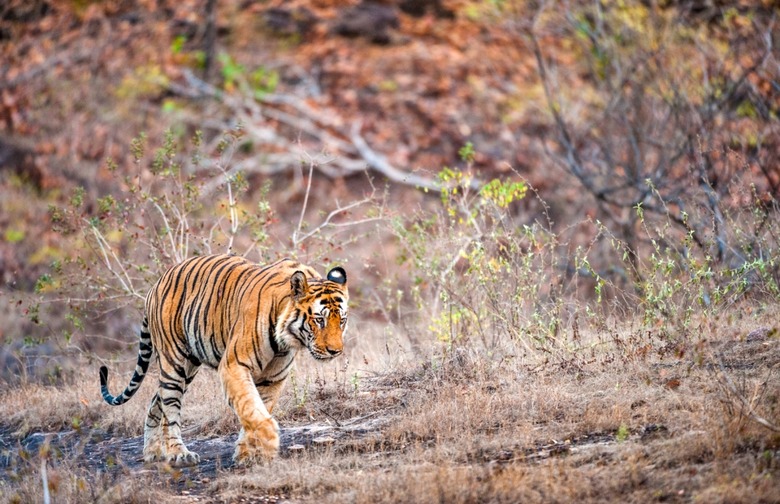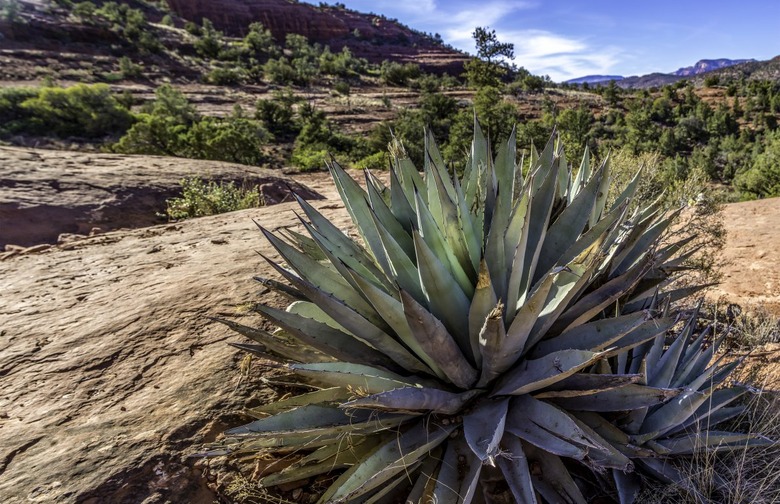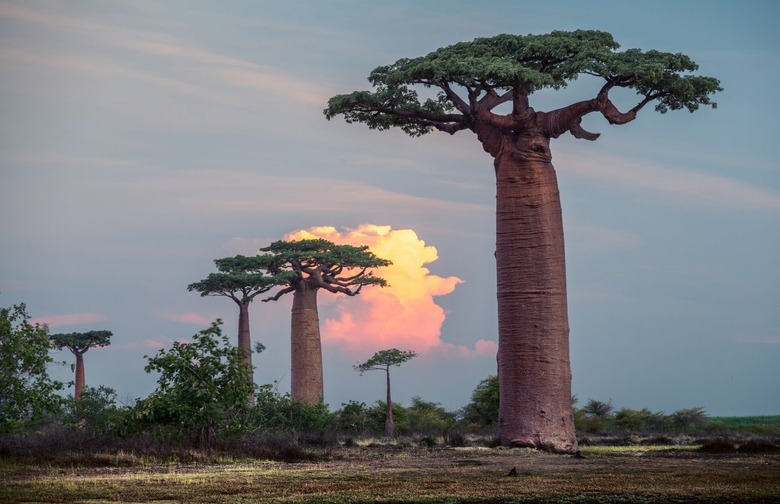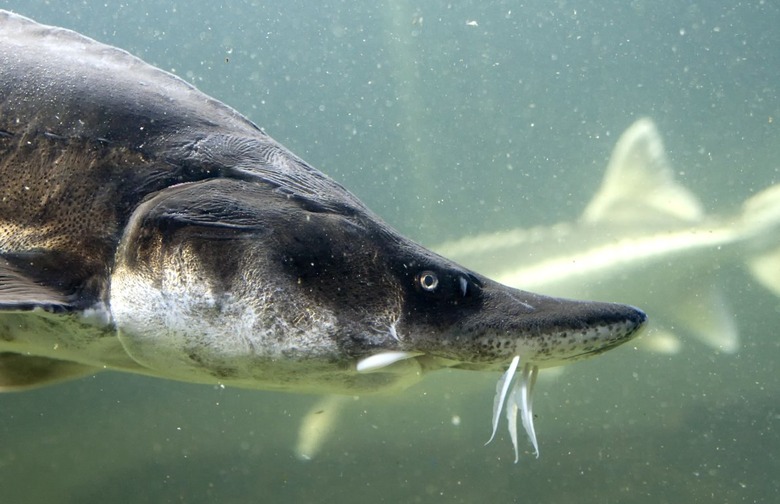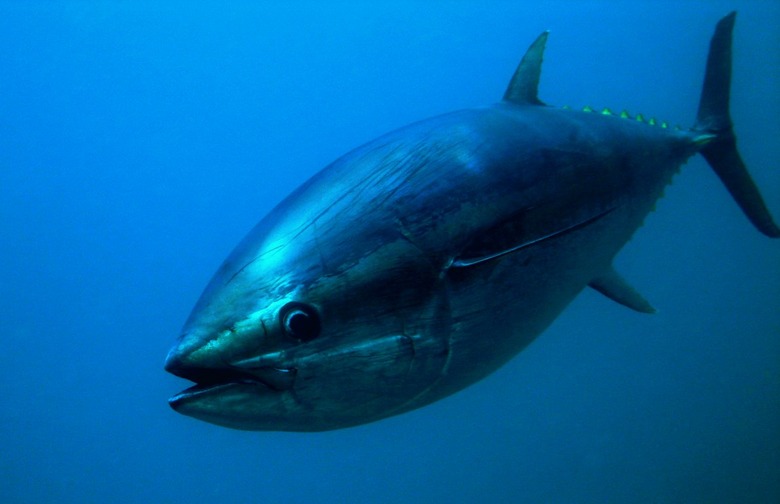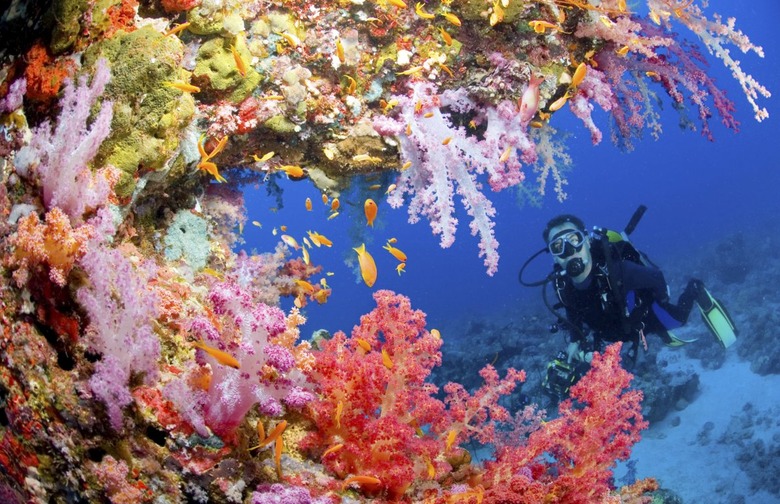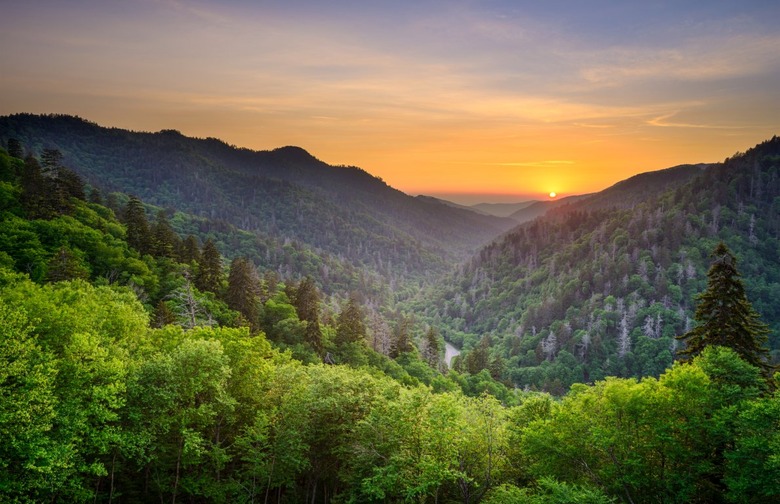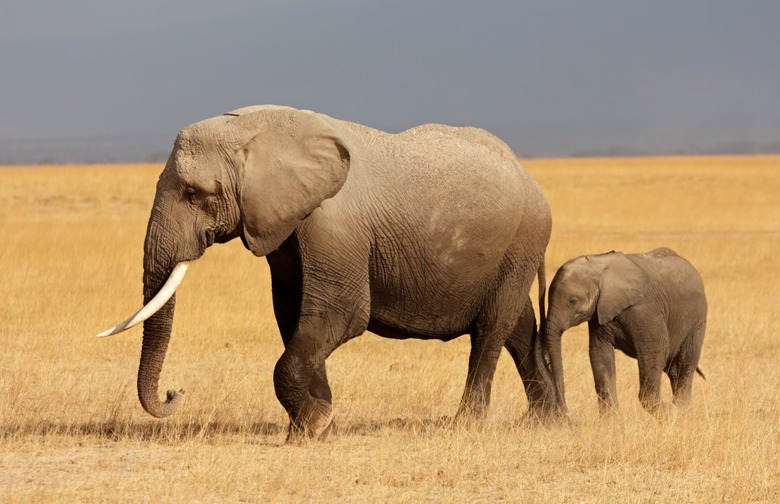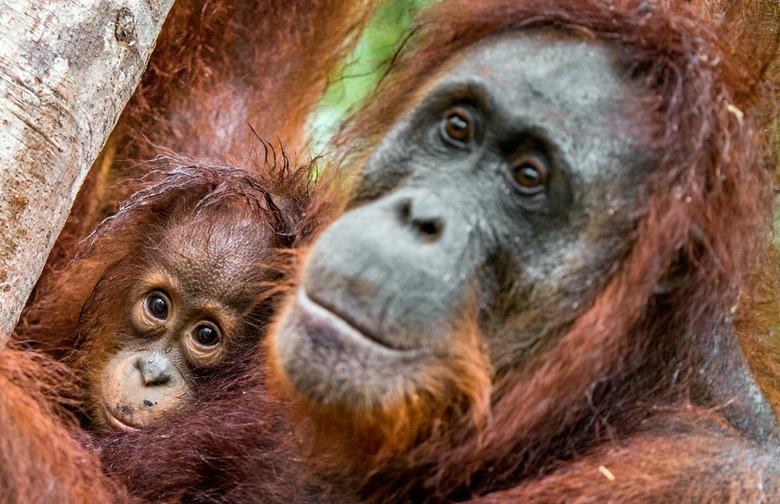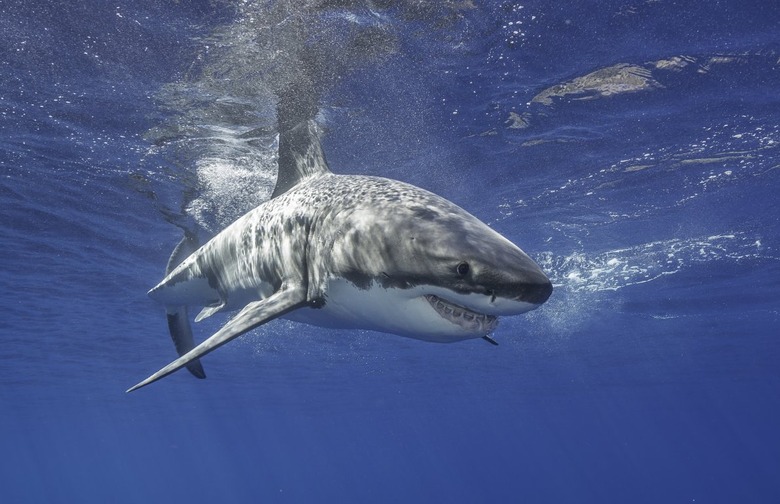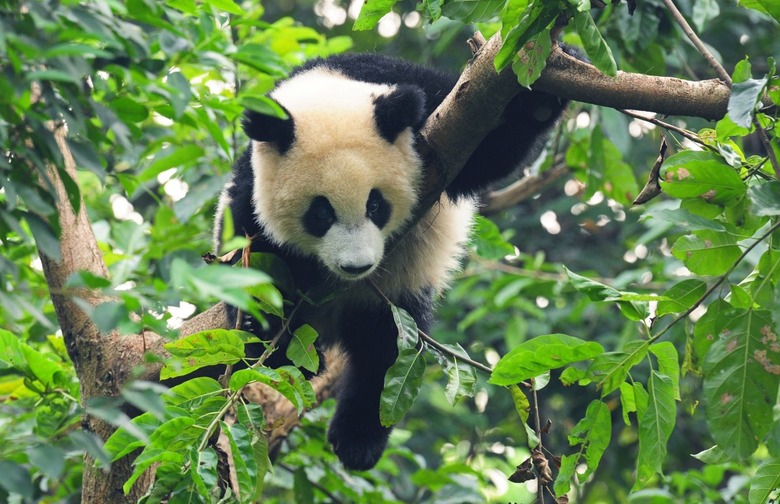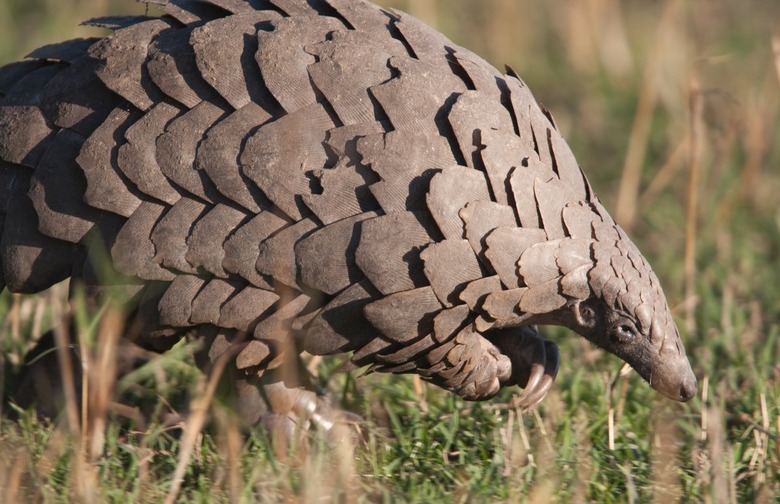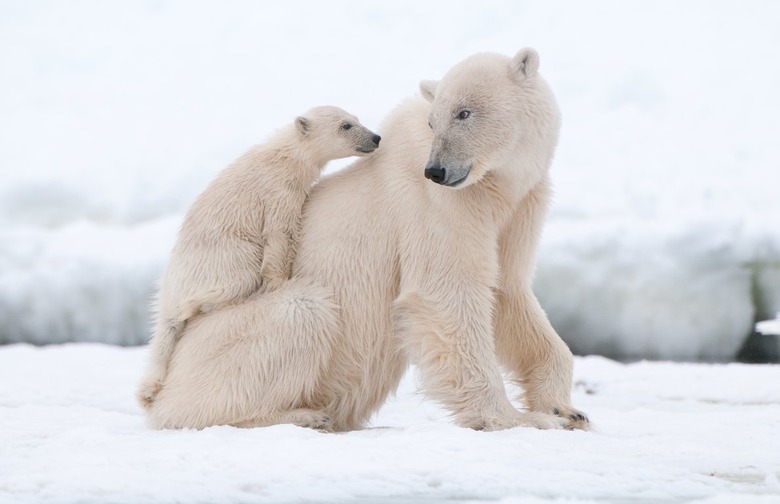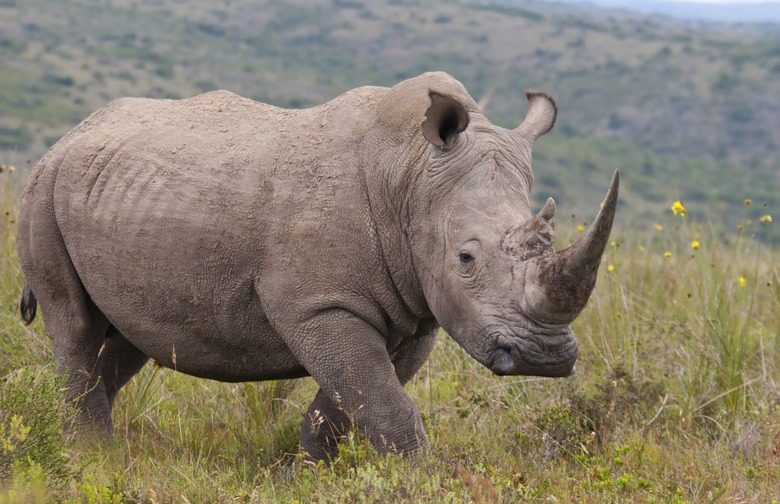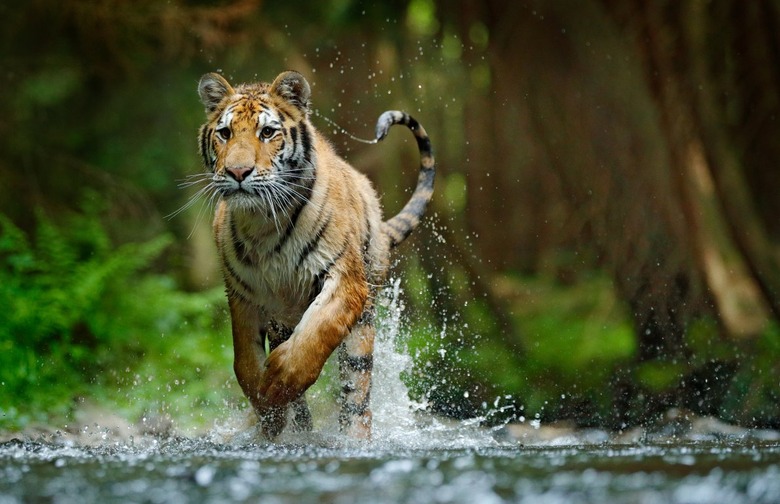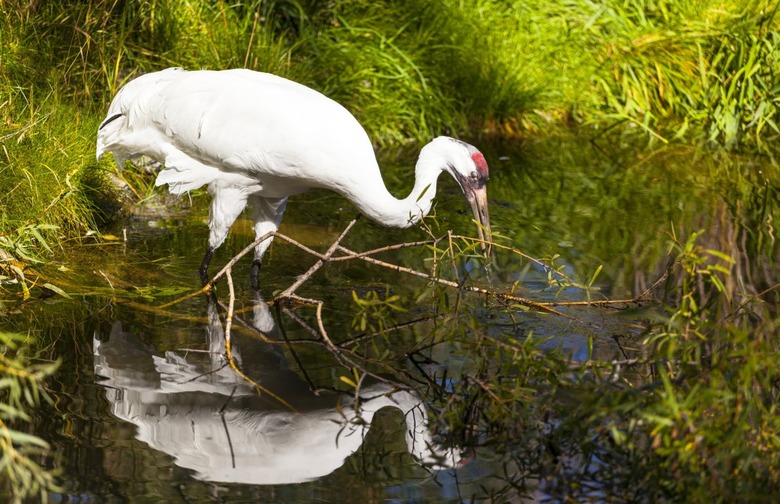15 Familiar Plants And Animals That May Not Be Around Much Longer (Gallery)
If future paleontologists look back at the fossil record of our period, they may see a mass extinction event on par with the one that wiped out the dinosaurs — or perhaps surpassing it. Some scientists estimate that the current rate of extinction is as much as 100 times higher than at any other time in Earth's history, and anthropogenic climate change could push the rate higher yet. In a sense, every species on the planet is endangered.
Still, scientists can identify that certain species are at particular risk for vanishing soon. The "Red List" published by the International Union for Conservation of Nature highlights thousands of threatened species, many of them microscopic or native to environments humans rarely encounter. But the endangered species we tend to actually think of are the ones conservationists often call "charismatic megafauna" — large, likable, often beautiful animals whose absence humans will notice if they go missing, like zebras, koalas, or humpback whales. (We tend not to notice plants as readily, but certain iconic trees like the baobab or Fraser fir can draw our attention.)
These notable species' survival even to this point is actually unlikely. The fossil record and historical evidence both indicate that humans are the ultimate superpredator, and our ancestors quickly wiped out the vast majority of large terrestrial animals as we spread to each new continent or isolated island. Humans will kill just about anything, and some of these well known species are still hunted as food today. None of them are well adapted to survive conflict with Homo sapiens, the species that, in many cases, is the only predator they have to fear.
This is by no means a comprehensive list of the most endangered species on the planet, but all of these creatures will be noticeable in their absence if they do disappear due to climate change, habitat loss, or any other cause. While many of them will be protected in zoos and sanctuaries even if they go extinct in the wild, the fact that some have already vanished from most of their natural ranges is an ecological problem in and of itself.
Arizona Agave
No, it's not the same agave used to make mezcal and tequila (the latter is made exclusively from the Weber blue agave), but it is a close relative native only to parts of Arizona. It was actually removed from the U.S. government's endangered species list in 2006, but not because its population isn't extremely threatened — it was discovered that Arizona agave was actually a hybrid of two other species rather than a species of its own, meaning it doesn't qualify for the same protection. (The lesser long-nosed bat, a species that helps pollinate agave, was once critically endangered but has made a full recovery.)
Baobab Tree
The stout trunk of the baobab is one of the iconic sights of Africa, but these trees' long lifespan, large size, and preference for arid habitats make them extremely vulnerable to deforestation and climate change. Baobabs also produce delicious fruit, which is often harvested by humans to eat (Coca-Cola even once used the flavor in a soft drink) while the seeds are pressed for oil; this can prevent new trees from sprouting. The largest and most famous baobab species, the endangered Grandidier's baobab, is native only to Madagascar, and the various large animal species that may have once helped disperse its seeds were likely hunted to extinction after humans colonized the island about 2,000 years ago.
Beluga Sturgeon
Some of the world's most expensive caviar comes from the world's largest freshwater fish, which can live over 100 years and grow to over 1.5 tons. Unfortunately, its long life span and slow growth make it incredibly vulnerable to overfishing. Fishing bans have been implemented and international trade closely monitored, but as with many other oft-poached species, the high value of the sturgeon's roe means there is a thriving black market, and some governments have been accused of lax enforcement of regulations. The actual annual sturgeon catch is estimated to be 10 times the legal limit.
Bluefin Tuna
Among the most delicious and commercially valuable ocean fish, all three species of bluefin tuna in the world's oceans have been dangerously overfished in the last century, leaving tuna populations at least 75 percent smaller than they were just 40 years ago. Amazingly, the market for sushi is largely responsible; though according to a 2008 New York Times Magazine article on tuna's precarious position, the fish was hardly popular at all in Japan until the 1800s, a desire for bluefin's red, fatty flesh boomed in the 1960s and '70s and continues today, while international efforts to combat overfishing have been largely ineffective.
Coral
Breathtaking coral reefs are built over millennia, but the colonies of coral polyps that build them have been disappearing precipitously just in the last few decades — Australia's Great Barrier Reef has lost half of its coral since 1985, inspiring some travelers to rush to visit the natural wonder before it disappears. Coral loss is attributed to a range of factors including increased tropical cyclones, predation by starfish, and coral bleaching, a phenomenon linked to climate change in which coral expel symbiotic algae when the water is too warm. If that sounds arcane, that's because ecology is incredibly complex — seemingly small changes can produce devastating effects, and when coral suffer, so do the countless other aquatic species that depend on reef habitats.
Eastern Hemlock and Fraser Fir
Leaf-lookers who enjoy seeing a band of dark green atop those variegated autumn hills have been seeing a lot more brown over the past decade. The eastern hemlock (the state tree of Pennsylvania) and the Fraser fir (very popular as a Christmas tree) are both disappearing from mountaintops. These two signature trees of the Appalachian bioregion are threatened by climate change, as a difference in a few degrees average temperature on the slopes can be the difference between a stand of birches or a forest of evergreens. But the more immediate danger for both of these trees is actually an invasive species — the woolly adelgid, a tiny insect introduced from Asia, has ravaged hemlock populations, and a similar insect from Europe affects the Fraser fir.
Elephant
Unlike many animals on this list, there are still hundreds of thousands of African elephants in the wild. However, habitat loss and, especially, poaching present an ever-increasing threat to elephant populations, which one census estimates are declining at 8 percent per year. Some conservation efforts have been successful, and both the U.S. and China banned ivory imports in 2016. But the black market for elephant tusks is still thriving, and poachers in some countries have developed complex organizations that work in concert with organized crime and corrupt government officials, making them difficult to combat and leading to assassinations of conservation activists and deadly shootouts with wildlife rangers.
Great Apes
Though they are some of humankind's closest relatives, the large primate species known as the great apes haven't fared terribly well on a human-dominated planet. Because of their size, gorillas and orangutans require large ranges to survive, making these intelligent species extremely susceptible to habitat loss as forests are felled to feed the ever-growing human population. Surprising as it may be, great ape species are also sometimes hunted for food (sometimes by humans displaced by conflict or poverty), and their body parts are also often sold as trophies or for use in traditional medicine.
Great White Shark
Sharks have a lot more to fear from humans than vice versa — even the terrifying great white, the species that inspired Jaws and is responsible for 74 documented shark attack deaths. Scientists aren't sure exactly how many great white sharks are alive today — one 2010 estimate found that there may be as few as 3,500, though most experts believe there are significantly more. But the shark's size, low birth rate, and long life span (female great whites don't even reach reproductive maturity until over 30 years old!) make it extremely vulnerable to disruption from commercial fishing activity.
Giant Panda
The panda probably isn't in danger of disappearing per se; because it's become a national symbol, it's likely the Chinese government would practically move heaven and earth to save it, and because it's adorable, zoos around the world have worked to preserve these charming bears. But like many of the animals on this list, the panda's large size makes it almost impossible for it to coexist with humanity's sprawl. Each adult panda can eat 30 pounds of bamboo per day, and the solitary creatures require a broad range. Because of this, habitat loss has dropped the wild panda population below 2,000 individuals.
Pangolin
You may not know much about the pangolin, but this plucky armored anteater, native to Africa and Southeast Asia, has become the world's most heavily poached creature, and pangolin meat is considered a delicacy by some. Armor plates keep the slow-moving pangolin safe from almost all predators (lions tend to be particularly vexed by finding a creature they can't kill), but the scales don't keep them safe from humans — in fact, their armor makes them more vulnerable, because humans use the scales in traditional medicine.
Polar Bear
The plight of the polar bear is well known, but it has to be included here. The world's largest bear is an apex predator perfectly adapted to thrive in a particular type of environment in the Arctic Ocean — an environment that is rapidly disappearing due to climate change. As polar ice continues to recede at an alarming rate year by year, polar bears are simply running out of places to live, hunt, and breed, and some estimates hold that the population could shrink by nearly half in just the next few decades.
Rhinoceros
Some think the rhinoceros' distinctive horn was the original inspiration behind the myth of the unicorn — and the way things are going, rhinos may soon be just as imaginary. Rhinoceros poaching has reached a fever pitch in recent years because of demand for the creatures' horns both for use in traditional medicine and as decorative trophies, and the South African government found that the number of rhinos killed increased fourfold just between 2010 and 2015. The last male northern white rhino died at 45 years old in March 2018, meaning that subspecies is now functionally extinct.
Tiger
Tiger populations are actually on the upswing due to conservation efforts, though it's estimated there are still fewer than 4,000 tigers alive in the wild. Part of the problem is that tigers are superb predators; they still regularly kill humans in India and are a hazard to livestock, and the encroachment of human populations on their habitat actually makes them even more dangerous. Tigers were once heavily hunted both for sport, fur, and safety, but now the primary threats are poaching (largely for use in traditional medicine) and rapid habitat loss.
Whooping Crane
The whooping crane is an unusual animal on this list, and in many ways a success story. North America's tallest bird is naturally rare and was at the very brink of extinction in the mid-twentieth century with only 23 living individuals, but conservation programs have helped the population grow to above 600. Many of these birds' habitats are still under threat, however, as their annual migration can take them from Texas all the way to Canada, and only concerted effort by activists and scientists has kept the species alive — the sort of precarious situation that other species on this list could soon find themselves in if things don't change. To help prevent even more species from ending up in danger, try a few of these 15 eco-conscious actions that will really make a difference.
More from The Daily Meal:
12 Foods and Beverages Banned Around the World
13 Foods You Probably Shouldn't Eat When Traveling
Famous Places to Visit Before They Disappear
21 All-Natural Cleaning Tips for Your Home
10 Best National Parks in America for a Picnic
